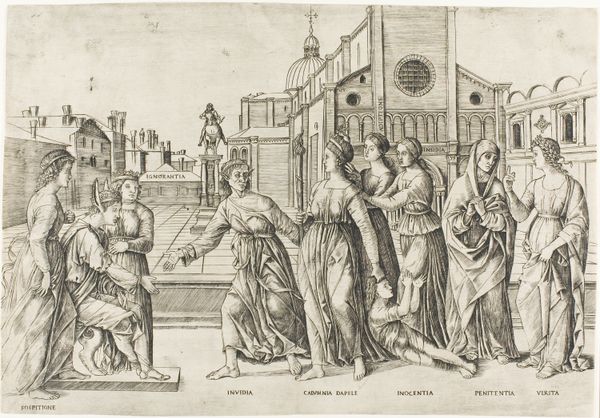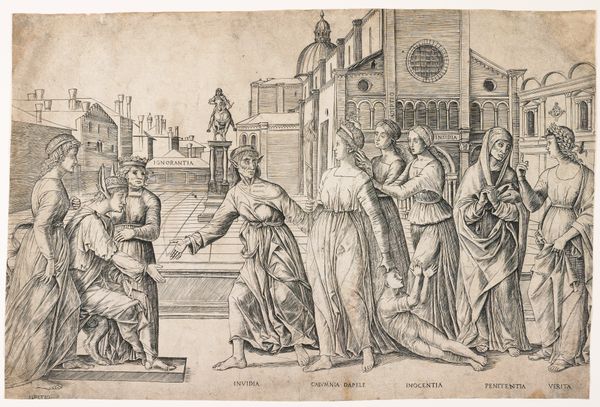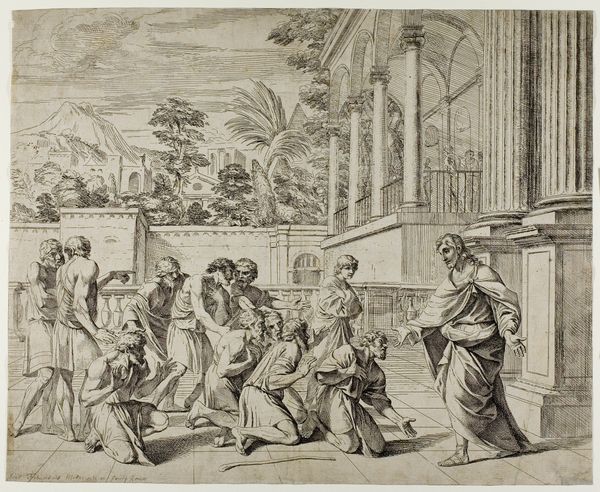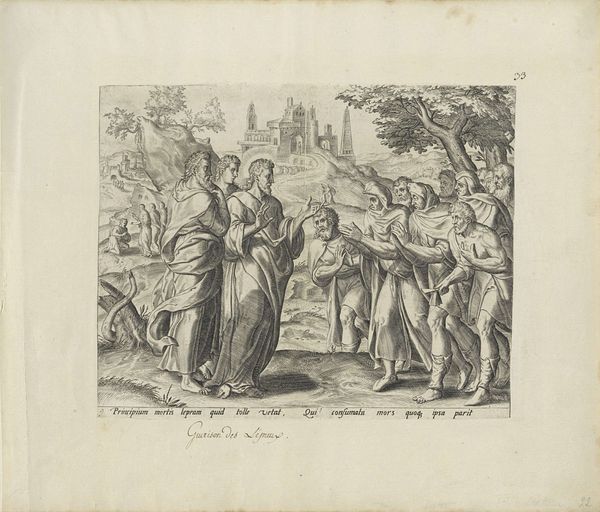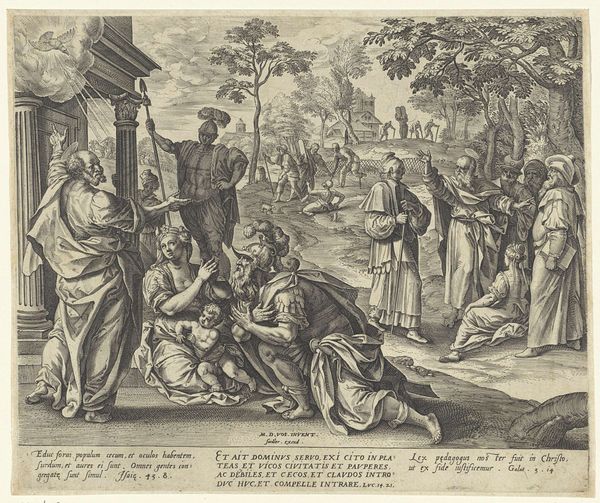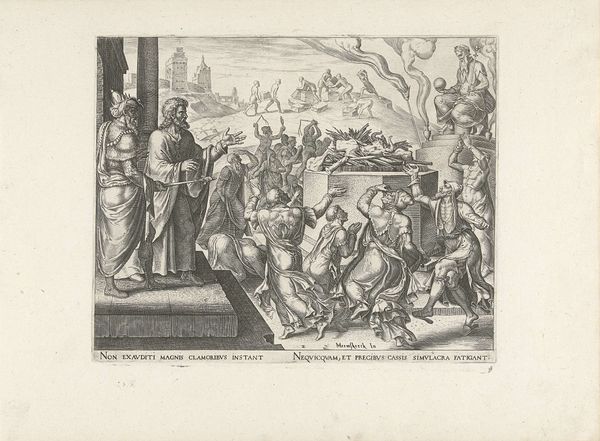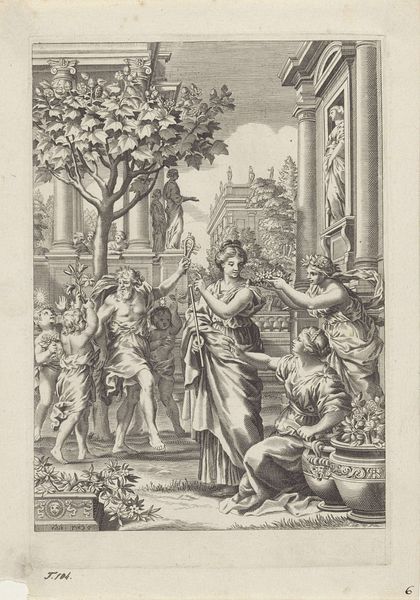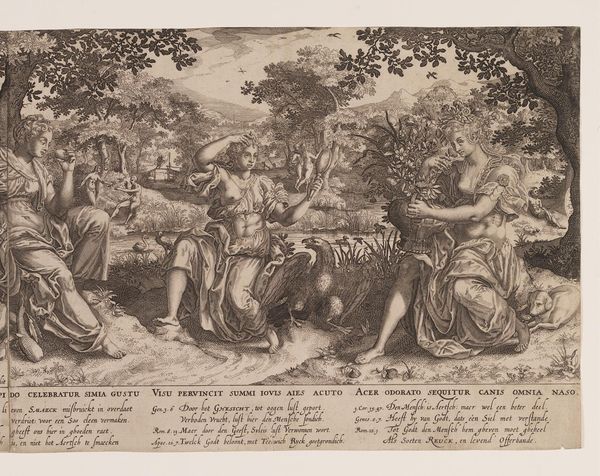
print, engraving
#
narrative-art
#
baroque
# print
#
figuration
#
history-painting
#
engraving
Dimensions: height 427 mm, width 832 mm
Copyright: Rijks Museum: Open Domain
Egbert Van Panderen made this engraving, "Parable of the Wise and Foolish Virgins," in the Netherlands during the early 17th century. It visualizes a biblical story about preparedness and the consequences of neglect. But beyond religious instruction, the image speaks volumes about the social anxieties of its time. The Netherlands in the 17th century was experiencing rapid economic and social change. The rise of a merchant class and increased urbanization led to new social structures and values. Van Panderen’s work is interesting, because through the architecture and dress, we get a glimpse into the visual codes of the time, what was considered orderly or disorderly behavior and what role the institutions played in maintaining such order. To understand this artwork fully, we might look into the religious and social history of the Dutch Republic, exploring sermons, pamphlets, and other visual media to understand how these ideas circulated and were debated in the public sphere. The meaning of art is always contingent on its social and institutional context, something a historian can unpack.
Comments
No comments
Be the first to comment and join the conversation on the ultimate creative platform.
